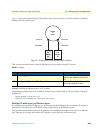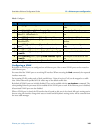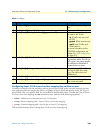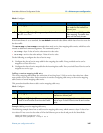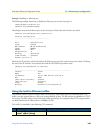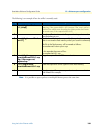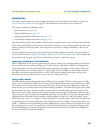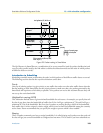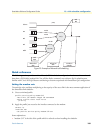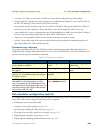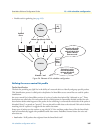
Introduction 152
SmartWare Software Configuration Guide 13 • Link scheduler configuration
Introduction
This chapter describes how to use and configure the Quality of Service (QoS) features. Refer to chapter 24,
“Access control list configuration” on page 253 more information on the use of access control lists.
This chapter includes the following sections:
• Quick references (see page 155)
• Packet Classification (see page 157)
• Assigning bandwidth to traffic classes (see page 155)
• Link scheduler configuration task list (see page 156)
QoS in networking refers to the capability of the network to provide a better service to selected network traffic.
In the context of VoIP, the primary issue is to control the coexistence of voice and data packets such that voice
packets are delayed as little as possible. This chapter shows you how to configure SmartWare to best use the
access link.
In many applications you can gain a lot by applying the minimal configuration found in the quick reference
section, but read sections “Applying scheduling at the bottleneck” and “Using traffic classes” first to understand
the paradox of why we apply a rate-limit to reduce delay and what a “traffic-class” means.
Applying scheduling at the bottleneck
When a SmartNode acts as an access router and voice gateway, sending voice and data packets to the Internet,
the access link is the point where intelligent use of scarce resources really makes a difference. Frequently, the
access link modem is outside of the SmartNode and the queueing would happen in the modem, which does
distinguish between voice and data packets. To improve QoS, you can configure the SmartNode to send no
more data to the Internet than the modem can carry. This keeps the modem’s queue empty and gives the
SmartNode control over which packet is sent over the access link at what time.
Using traffic classes
The link scheduler needs to distinguish between different types of packets. We refer to those types as “traffic-
classes”. You can think of the traffic-class as if every packet in the SmartNode has a tag attached to it on which
the classification can be noted. The access control list “stage” (ACL) can be used to apply such a traffic-class
name to some type of packet based on its IP-header filtering capabilities. The traffic-class tags exist only inside
the SmartNode, but layer 2 priority bits (802.1pq class-of-service) and IP header type-of-service bits (TOS
field) can be used to mark a specific packet type for the other network nodes. By default the traffic-class tag is
empty. Only two types of packets are automatically marked by the SmartWare: voice packets and data packets
origination from or destined to the SmartNode itself are marked as “local-voice” and “local-default” respec-
tively. Please refer to figure 22 on page 153 when using the ACL to classify traffic. It illustrates the sequence of
processing stages every routed packet passes. Only stages that have been installed in the data path with a “use
profile...” statement in the corresponding interface configuration are present. Both an input direction ACL on
the receiving interface as well as an output ACL on the transmitting interface can be used to classify a packet
for special handling by the output link scheduler on the transmit interface. But as visible from the figure no
ACL can be used for an input link scheduler.



